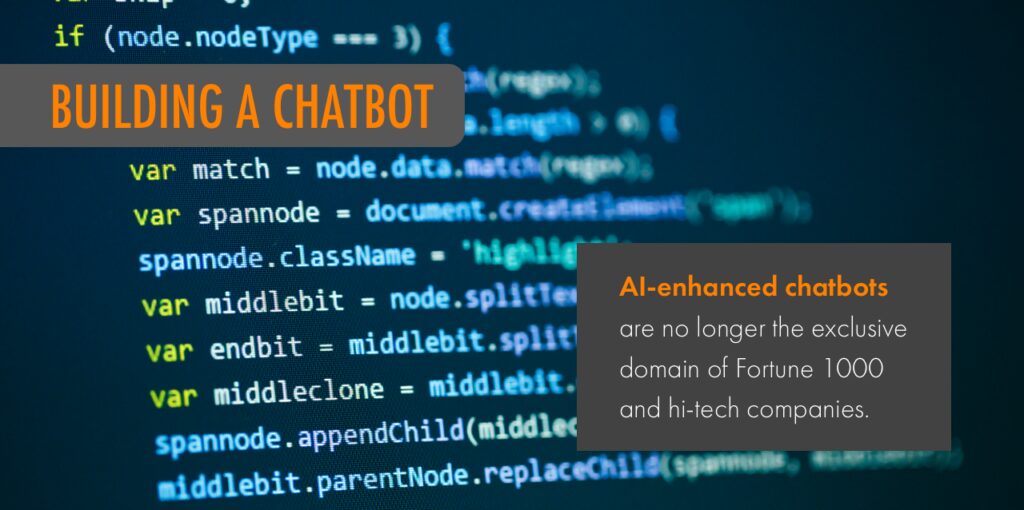In an era where technological advancements are reshaping the landscape of human-machine interactions, Artificial Intelligence (AI) chatbots have emerged as powerful tools across various industries. These conversational agents, capable of understanding and responding to user queries, play a pivotal role in enhancing user experiences and streamlining business processes.
We will demystify the process of creating your first AI chatbot using the versatile programming language Python. Whether you are a budding developer, business professional, or enthusiast eager to explore the world of AI, our structured and accessible pathway to Python AI projects for beginners will help you understand the foundations of chatbot development.
It is important for anyone seeking to harness the potential of this technology to know the mechanics of chatbots and their applications. From customer support automation to personalized user interactions, the versatility of chatbots extends across various domains. This guide is tailored to empower you with the skills and knowledge required to develop intelligent and responsive chatbots. So, let’s get started with the guide!
What are Chatbots?
Chatbots are sophisticated artificial intelligence (AI) applications designed to simulate natural conversations with users through text or voice interactions. These digital bots leverage natural language processing (NLP) and machine learning algorithms to effectively understand and respond to user queries and carry on human-like conversational experiences. Whether integrated into websites, messaging platforms, or applications, chatbots serve as virtual assistants, providing information support and performing tasks through interactive dialogue.
Chatbots utilize a conversational interface, allowing users to interact with software applications in a dialogue format. This interface can be text-based chat or voice interactions, providing a familiar and intuitive communication method. Chatbots are equipped to recognize and understand the underlying intent behind user messages. They can discern what the user wants to achieve or inquire about through sophisticated algorithms, allowing for tailored and relevant responses.
Setting Up Your Development Environment

Source: chatbotslife.com
The first step in developing your AI chatbot involves setting up a robust development environment. This foundational step requires the thorough configuration of your system to accommodate Python, the language of choice for this journey. Concurrently, installing essential libraries and tools is important to ensure a streamlined development process. Utilizing renowned integrated development environments (IDEs) like PyCharm or Jupyter Notebooks enhances your coding experience, boosting an environment conducive to innovation and efficiency.
Choosing a Chatbot Framework
Selecting the appropriate chatbot framework is similar to choosing the architectural blueprint for your digital creation. Frameworks serve as the scaffolding, offering pre-built modules and functionalities that accelerate development. In Python, prominent choices such as ChatterBot, Rasa, and Botpress present themselves. The selection hinges on factors like ease of use, scalability, and project-specific requisites. For the purposes of this guide, we will delve into the foundational principles of using ChatterBot, renowned for its accessibility and beginner-friendly attributes.
Building the Chatbot’s Foundation
As the curtain rises on your chatbot development journey, the inaugural act involves constructing a solid foundation. This encompasses the meticulous definition of conversational flow, the discernment of user intents (the underlying purpose of a user’s message), and the identification of entities (specific pieces of information within user input). This foundational phase is the bedrock, giving your chatbot the linguistic acuity to engage in coherent conversations and respond intelligently to user queries.
Implementing Natural Language Processing
Natural Language Processing (NLP) is the cornerstone of a chatbot’s ability to understand and interpret human language. It involves utilizing computational techniques to analyze, comprehend, and generate human-like text. In the context of chatbot development, implementing NLP enables the system to extract meaning from user inputs, recognize intents, and identify relevant entities for accurate and context-aware responses.
Key Steps:
Tokenization:
Tokenization involves breaking down text into smaller units, such as words or phrases. This process facilitates the analysis of individual components, allowing the chatbot to understand the structure of user input better.
Stemming and Lemmatization:
Stemming and lemmatization are techniques that reduce words to their base or root form. This ensures that variations of words are recognized as the same, enhancing the chatbot’s language-processing capabilities.
Part-of-Speech Tagging:
This step involves assigning grammatical parts of speech (e.g., noun, verb, adjective) to words in a sentence. Part-of-speech tagging aids in understanding the syntactic structure of user input.
Named Entity Recognition (NER):
NER identifies and classifies entities within text, such as names, locations, or dates. Integrating NER into your chatbot allows it to extract meaningful information from user queries.
Adding Intelligence with Machine Learning

Source: aeratechnology.com
Machine Learning (ML) is pivotal in imbuing your chatbot with intelligence and the ability to adapt over time. By leveraging ML algorithms, your chatbot can learn from user interactions, improving its accuracy in understanding intents and delivering relevant responses.
Key Steps:
Training Data Preparation:
Compile a dataset of sample conversations and user queries to train the chatbot. This dataset should cover a diverse range of scenarios to enhance the chatbot’s adaptability.
Model Training:
Utilize machine learning algorithms to train the chatbot model based on the prepared dataset. This involves exposing the model to various inputs and expected outputs to enable it to learn patterns and associations.
Evaluation and Fine-Tuning:
After the initial training, evaluate the chatbot’s performance using test data. Fine-tune the model by adjusting parameters and providing additional training to enhance accuracy.
Continuous Learning:
Implement mechanisms for continuous learning. This allows the chatbot to adapt and improve its responses over time, staying relevant in dynamic user environments.
Testing Your Chatbot
Before unleashing your chatbot into the wild, it undergoes a crucial phase: testing. This step ensures your creation is functional and delivers accurate, relevant, and context-aware responses. You will identify and rectify potential hiccups through thorough testing, refining the chatbot’s conversational abilities, and enhancing its overall performance. Think of it as the quality check before your chatbot makes its debut in the real-world interaction arena.
Deploying Your Chatbot

Source: linkedin.com
With testing triumphantly completed, it’s time to launch your chatbot into action. Deploying your chatbot involves making it accessible to users, allowing them to engage in conversations and experience the fruits of your development labor. This phase includes selecting a suitable hosting platform, configuring the necessary infrastructure, and ensuring the chatbot can handle many user interactions. As your chatbot takes its first steps into the digital world, it transforms from lines of code into a practical, user-facing assistant.
Conclusion
As we conclude this blog exploring the world of AI chatbots, you must have acquired the essential skills to infuse vitality into your virtual conversational ally. Yet, this marks not the end but a beckoning to a perpetual journey of discovery.
Consider leveraging resources from esteemed companies like Open Weaverfor ongoing support and expert insights. Renowned for providing robust open-source frameworks and guides, Open Weaver’s kandi stands as a trusted companion in navigating the dynamic landscape of AI development. AI technology is here to stay, and hence, you can explore and leverage it to shape the future. Join us in this ongoing adventure, where every line of code propels you toward mastery.
Use the power of Kandi’s open-source resources for elevated AI proficiency! Here’s to the next chapter of your coding!



